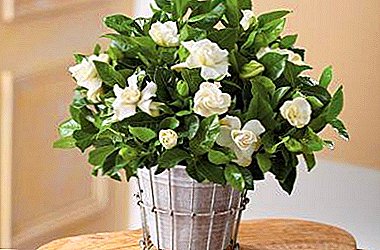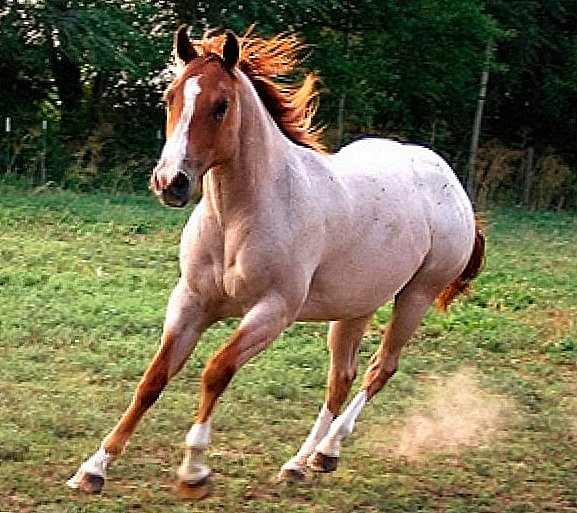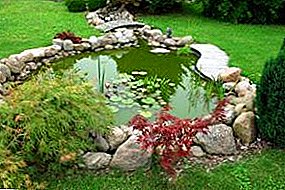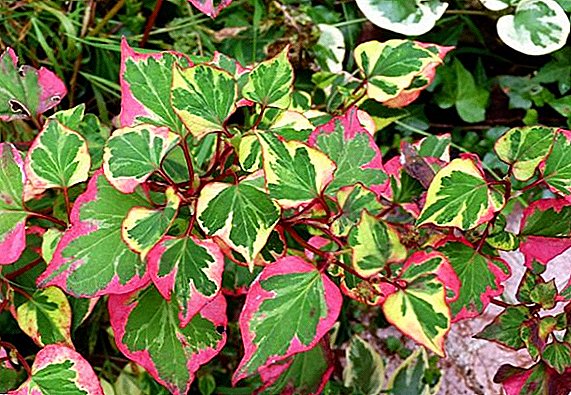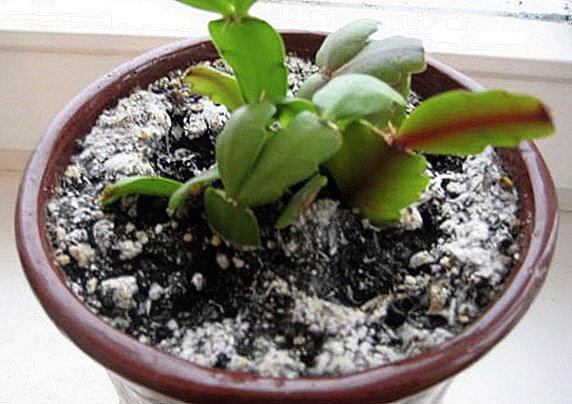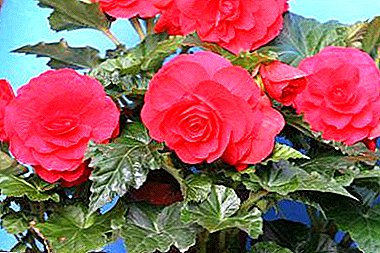
Tuberous begonias are planted in pots and outdoors. In order for the decorative culture to please the eye with beautiful flowers, it is important to plant it properly and provide competent care. All this will require the gardener knowledge of certain subtleties. This will help to understand the following questions: when and under what conditions it is necessary to transplant a tuberous runner, how to plant a flower in open ground and in a pot, why begonias need a transplant and how it is done, as well as what kind of care a plant planted at home or in the garden requires.
Terms and time
For planting crops in open ground, you need to wait for warm, steady weather in late May or early June. Night temperature should not fall below +12 degrees. When choosing a place for begonias in the garden are guided by two factors: practical and aesthetic. Plants are planted in a prominent, bright area, well protected from wind and direct solar radiation. Bright lighting causes burns on the leaves.
An ideal place for planting begonias next to bushy plants that will cast a shadow. If there is no such place in the garden, they arrange artificial shading - a canopy from a fine-meshed net is installed.
Attention! Begonias are very demanding on the soil.
The soil on the site should be low in acidity, fertile, loose. Should not be nearby:
- Willow or oak. Trees saturate the earth with tannins, adversely affecting the development of begonias.
- Big stones.
- Dense layer of soil.
If the land is "poor", add humus, bird droppings or other organic matter. You can prepare the soil by mixing 2 parts of peat and leaf soil and a part of coarse sand. A week later, you can plant plants. In the pots, the tuberous begonias begin to plant in late February and early March.
- Bolivian;
- decorative ampel;
- tuberous.
How to plant?
Potted room
 Flower containers are suitable from any material: plastic, glass, ceramics. Containers should not be deep, since begonias have a shallow root system. For planting, you can buy a ready-made substrate or prepare it yourself by mixing 2 parts of leaf humus with a part of peat and sand.
Flower containers are suitable from any material: plastic, glass, ceramics. Containers should not be deep, since begonias have a shallow root system. For planting, you can buy a ready-made substrate or prepare it yourself by mixing 2 parts of leaf humus with a part of peat and sand.
Work with planting material should be careful: do not drop and do not press on the tubers.
Scheme of landing in the pot:
- Put the dishes on the tray.
- Be sure to put drainage at the bottom of the tank: expanded clay, broken bricks or clay shards.
- Pour the soil. The surface should be below the edge of the pot by 3-4 cm.
- In the center make a groove and plant a tuber.
- Planting material is placed in the ground with a convex side. The third, which is above, must remain on the surface.
- Earth sprinkled only after the appearance of the first shoots. A place for the growth of begonias should be bright, but protected from direct ultraviolet rays and drafts. Temperature range - from 15 to 17 degrees Celsius.
We invite you to watch a video about planting a tuberous begonia in a pot:
For beds in open ground
From the end of February, you can purchase planting material for growing in the garden. Tubers must be dense and even, brown in color, free from mold and plaque. Until landing they are stored in a cold place.
 Before planting the tubers, cut off the dead roots and place it on 3/4 in warm water with fungicide added for half an hour.
Before planting the tubers, cut off the dead roots and place it on 3/4 in warm water with fungicide added for half an hour.
Planting the tuberous begonia in a flower garden:
- Prepare recesses for planting material, based on the size of tubers. For massive, the optimal distance is 30 cm, for medium ones - 20 cm, for small ones - 15 cm.
- In the pits to pour ash and humus.
- Moisten the soil slightly.
- Place the tubers in the wells and fall asleep to the base of the shoot.
- Landings are mulched with a mixture of ash and humus.
Subtleties transplant
In what cases is it necessary and when is it performed?
When the rhizomes begin to look out of the drainage holes, the plant must be urgently transplanted into another container. Begonias are transplanted in other cases.:
- Yellowed leaves.
- There are signs of the disease.
- Sour earth.
- Dishes spoiled.
- Flower flooded.
What to do?
Sequencing:
- The flower is carefully removed from the pot.
- Rhizomes are cleaned from the ground.
- The root system is immersed in a weak solution of potassium permanganate for 20 minutes.
- Cut off all the rotten roots and process the cuts with charcoal.
- A container that is larger than the previous one is filled with a new substrate and a plant is planted.
After transplanting the culture will be sick for a while. In the new pot, it will take root only after 2 weeks.
We invite you to watch the video on transplantation of begonias:
Plant photo
Here you can see a photo of a tuberous begonia growing at home and in the garden:





How to care?
At home
Containers with plants put on a bright place, avoiding the direct rays of the sun. The optimum location is the windowsills on the east or west side. From the strong sun window curtain.
Begonia watering rules after planting in the pot:
- Moistening with warm boiled or settled water.
- At room temperature, water 3 times a week. In the heat - every day.
- Avoid moisture on the leaves.
- Make sure the ground is dry before moistening.
- After flowering, reduce watering gradually.
The optimum temperature is at least + 20-22 degrees. In the winter at least + 15 (how to properly maintain the tuberous begonia in the winter, you can find out here). Begonias need complex feeding. Once every 2 weeks they are fed with mineral fertilizers, alternating with organic matter.
When budding is finished, the ground part is cut, a vessel with tubers is placed in a cool place until spring and stored at a temperature of plus 10 degrees.
The fact that the plant ampelous begonia and how to care for it, read our material.
In the garden
Features care for the tuberous begonia on the street:
- Systematic watering after drying the soil with settled water.
- Weeding
- Fertilizer with potassium-phosphorus compounds, ashes, and humus once every 2 weeks from May to October. From August, fertilizers stop plants from preparing for winter.
- Pinching the top of the stem to achieve a length of 12 cm to stimulate the development of lateral shoots.
- Begonias on the street need abundant watering, especially in hot weather. Do not allow stagnant water. Watering is better in the morning. It is not desirable that moisture gets on the stems, leaves and flowers. Sun rays can cause burns.
Excessive moisture leads to rotting of the root system and the death of the crop (about why the tuberous begonia does not bloom and what to do, as well as what diseases can destroy the plants, read here). Description, prevention and treatment of plant diseases.
- The shoots of plants are very brittle, so they are tied to a support. It is advisable to remove faded flowers from the bushes.
- When the grass culture grows rapidly, pruning of shoots and foliage is carried out. When the stems are stretched to 8 m, they correct the shape: remove the extra processes from the sides to give the bush the desired look.
Garden clippers cannot be used for pruning, because begonia is a very delicate plant. For the work fit only a sharp knife.
- After pruning, it is recommended to sprinkle damaged areas with charcoal for quick recovery.
- With the onset of autumn, watering is gradually reduced. Rhizomes dig up before the onset of the first frost. Green mass is removed, the roots are trimmed, disinfected with a fungicide. Dried, placed in peat and stored until spring in a cold place.
- ampelous from cuttings and from seeds;
- tuber from cuttings.
Thus, the tuberous begonia in the open ground is planted with the onset of heat. At home no later than March. It is important for plants to provide regular watering without waterlogging. Feed constantly - from the moment of planting until the end of flowering.


